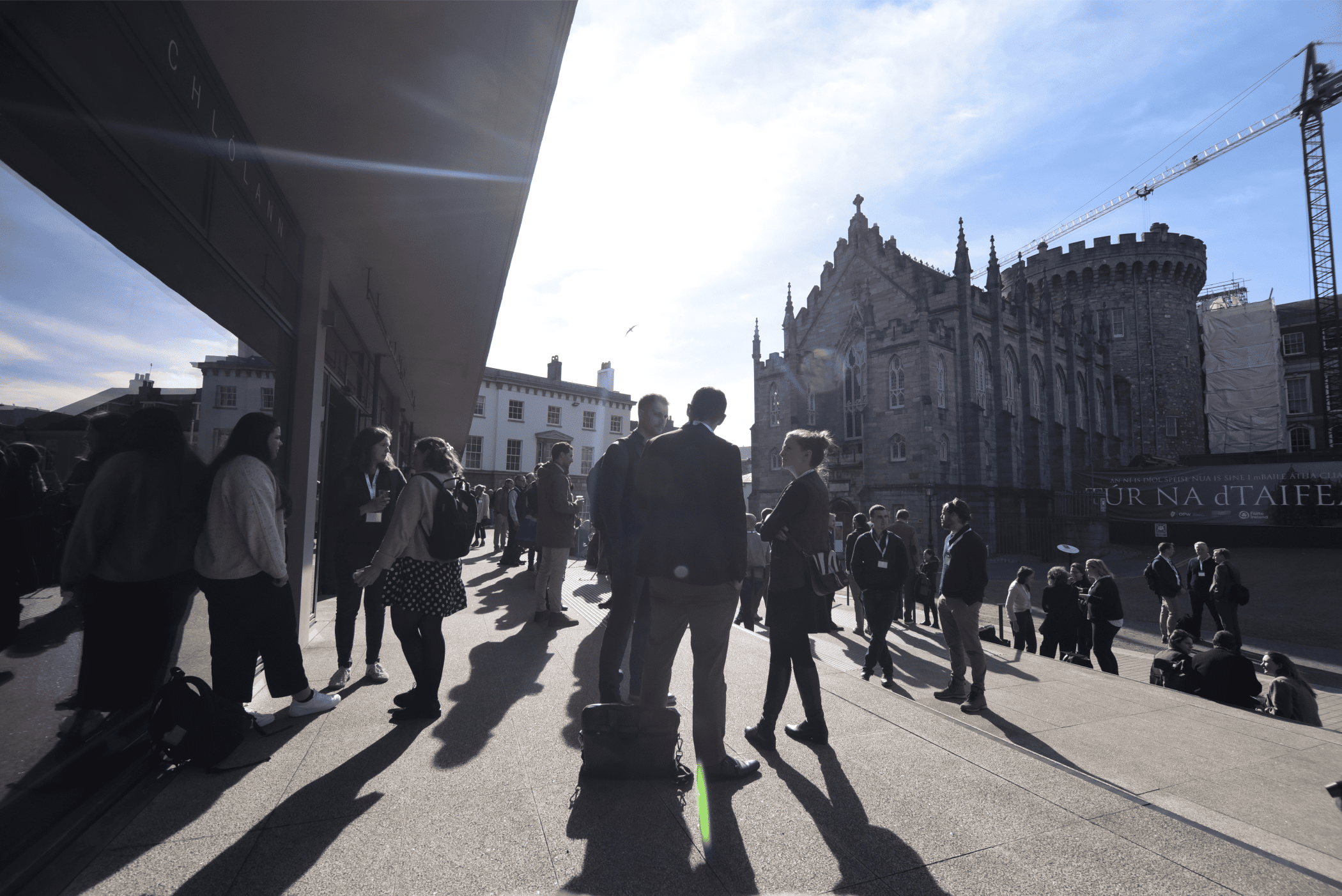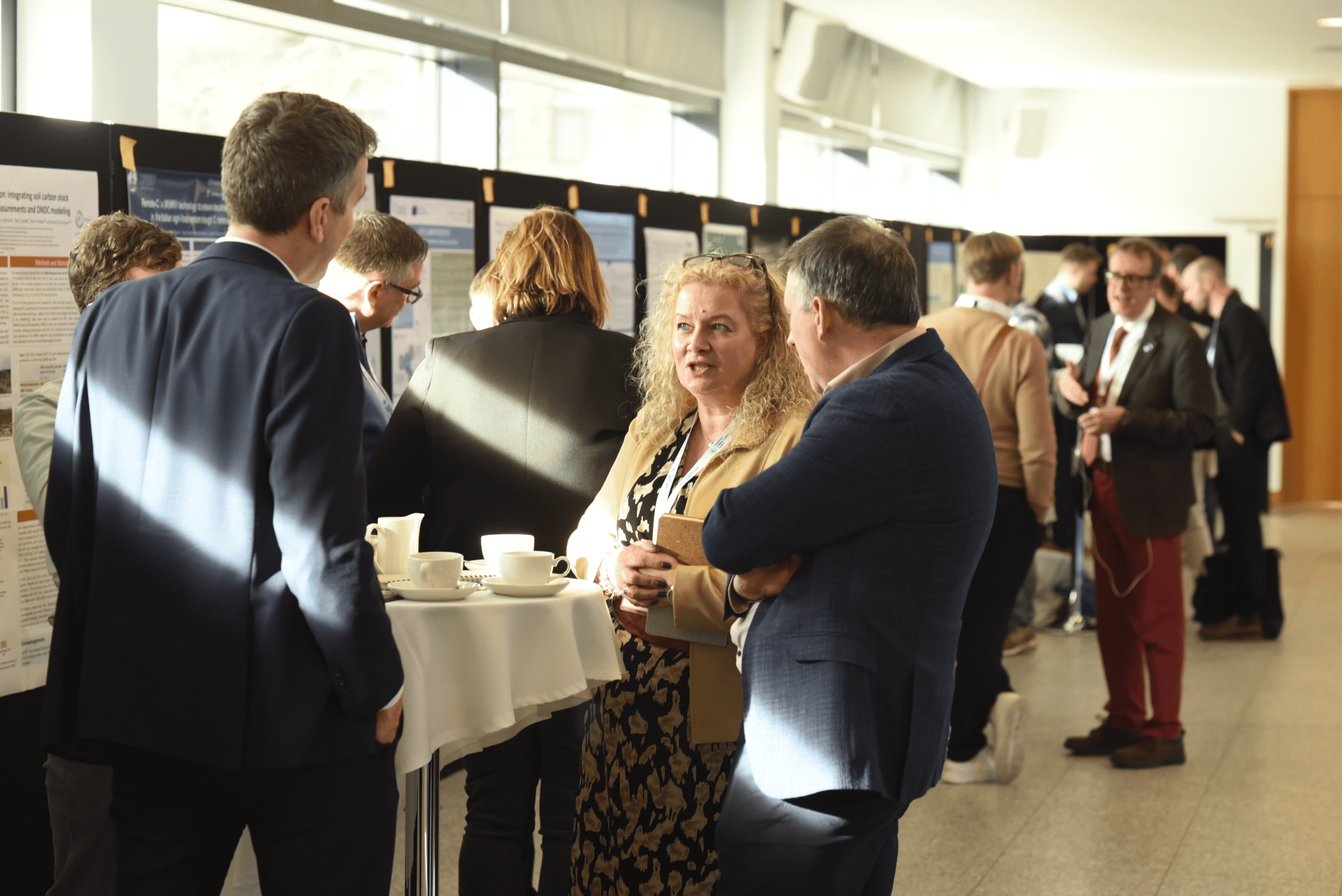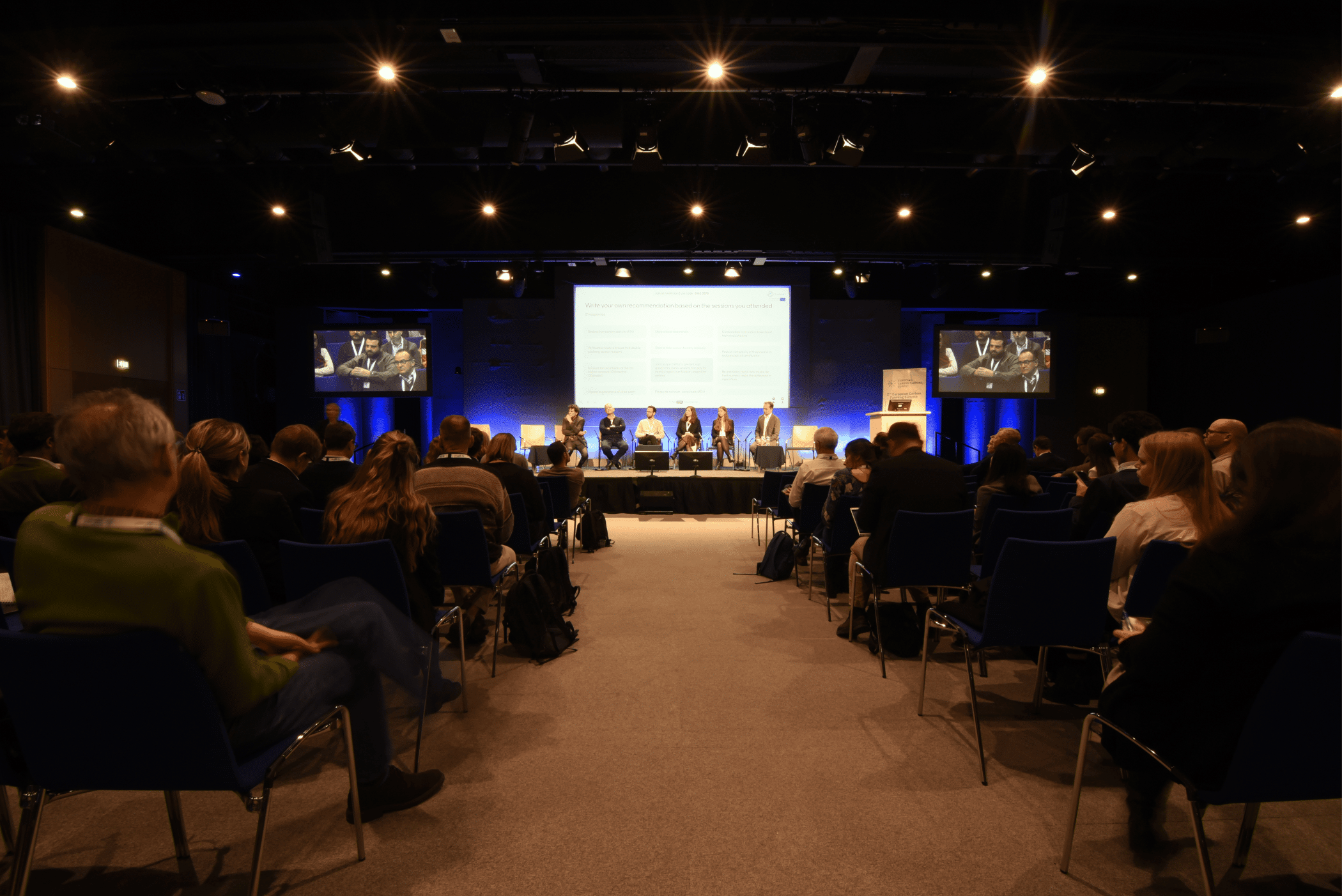Beyond sequestration: Insights from the 2nd EU Carbon Farming Summit

The 2nd European Carbon Farming Summit brought together over 1,000 stakeholders to shape the future of regenerative agriculture in Europe. Discussions highlighted the urgent need to move beyond carbon metrics alone – emphasising biodiversity and landscape resilience. With strong backing from the Irish government, the summit made it clear that farmers and foresters must be at the heart of the transition toward a more sustainable form of agriculture.
Held in Dublin, Ireland from March 4th to 6th 2025, the summit was a significant moment in the effort to scale carbon farming across Europe. Organised by Climate KIC, in close collaboration with the Project Credible consortium, this year’s event convened over 550 participants in person, with over 500 more attending online.
Over three days, five plenary sessions, and 42 parallel discussions, the summit brought together policymakers, researchers, industry leaders, and perhaps most importantly, farmers and foresters. These discussions confirmed something important: carbon farming is not just about carbon. While it is a vital climate tool, its real potential lies in driving systemic change – reshaping agricultural landscapes, restoring biodiversity, and ensuring long-term resilience in food production.
Ireland, with its rich agricultural heritage and ambitious land-use policies, provided the perfect setting to examine how carbon farming can move from fragmented pilot projects to a scalable and effective climate solution. Set against the historic backdrop of Dublin Castle, the summit was convened in partnership with the Government of Ireland’s Department of Agriculture, Food and the Marine (DAFM).
| > Click here to register your interest for the 2026 summit |
A strong commitment from the Irish government
Highlighting Ireland’s commitment to the future of carbon farming, Minister of Agriculture, Food and the Marine Martin Heydon addressed the summit, emphasising the importance of engaging farmers and foresters in shaping the sector’s future.
“Farmers and foresters are the custodians of our land,” Minister Heydon said. “These are the people who can deliver the kind of ecosystem services that have the potential to attract investment in the future. For this reason, engagement with them will be a foundation of any policy development in this area.”
The Minister also announced plans to develop a national policy for carbon farming in Ireland, ensuring that it becomes an opportunity for farmers and land managers to access new income streams. He pointed to existing initiatives like the Woodland Environmental Fund as examples of how carbon farming can deliver benefits for landowners, private investors, and government.
Recognising the importance of collaboration, the Minister acknowledged the department’s close partnership with Climate KIC:
“The department and Climate KIC have been closely working with Irish stakeholders to gather their views on barriers and opportunities, but also to map the steps needed to realise Ireland’s ambition of becoming a global leader in sustainable agri-food systems.”
|
What is carbon farming? Carbon farming can be defined as a green business model that rewards the actors of the land sector for taking up improved land management practices resulting in carbon sequestration in living biomass, dead organic matter, and soils by enhancing carbon capture and/or reducing the release of carbon to the atmosphere. |
A summit designed to drive change
The summit was as an exercise in co-creation, with every session inviting attendees to actively contribute to shaping the future of carbon farming. In the build-up to the summit, an open call for sessions was followed by another call for contributions – allowing the most pressing and high-impact topics to take centre stage. Many of the resultant sessions were deliberately merged to support multi-actor discussions, ensuring that critical issues – such as finance, policy alignment, measurement and verification (MRV), and farmer engagement – were tackled from multiple perspectives. The result was a rich, cross-sector dialogue that produced tangible insights and recommendations.
Reflecting on this process, Tristano Bacchetti De Gregoris, Project Credible’s coordinator, remarked that the summit demonstrated the European Commission’s commitment to building a framework for agriculture that contributes to achieving the EU’s climate goals: “All actors have their seat at the table and their voices are being heard. Only by working together can we design an effective system we can trust.”
Kirsten Dunlop, CEO of Climate KIC, reflected on the unique spirit of the summit:
“I travelled to Dublin and found a determined energy, and a tangible sense of the benefits to be had from working together on meaningful collaboration. Carbon farming is the tip of the spear – one means to create a new economy grounded in valuing and rewarding sustainable land use, healthy soils, nature-based solutions, and ecosystem services.”
Key takeaways: From carbon to systemic change
One of the strongest messages to emerge from the summit was that carbon farming must be about more than carbon sequestration. While soil carbon storage plays a crucial role, a narrow focus on carbon risks missing the bigger picture. An effective approach should integrate ecosystem elements such as carbon, biodiversity, and water, but also people-centered aspects such as generating business opportunities and strengthening the sense of belonging. Discussions repeatedly emphasised the need to move from a soil-only perspective to a broader landscape approach that includes both above-ground and below-ground benefits.
Finance was another major theme. Carbon markets alone cannot drive the transformation needed. While voluntary markets are evolving, they remain poorly regulated and their impact fragmented, and many farmers lack awareness of how they can participate. Public funding will also not be enough to scale carbon farming across Europe, and so blended finance – a mix of public and private investment – is essential for long-term sustainability. Governments set the foundation, but private sector engagement is critical for unlocking scale.
In a reflection on how to approach notions of scale, Eric Soubeiran, CEO of Livelihoods Venture, highlighted the role of financial and policy alignment:
“Scaling regenerative agriculture requires integrated approaches – across policy, finance, and operations. Establishing a long-term policy vision, ensuring farmers are financially supported, and linking public and private resources are critical steps to building a resilient, nature-positive agricultural future in Europe.”
Building on the theme of policy, the summit drew attention to the need for greater coherence across the European Union. Mathieu Mal, Policy Officer at the European Environmental Bureau – and Policy Lead in the Project Credible consortium – noted that while the EU is articulating numerous environmental and agricultural policies, these “too often operate at cross purposes.” He argued that the Carbon Removals and Carbon Farming Certification Framework (CRCF) should seek synergies with the wider policy mix – “to realise its potential as a means to drive systemic change across land management and food systems.”
He added: “For decades, conventional EU agriculture has pulled farming out of nature. We are now seeing the consequences of that approach. A return to farming in synergy with nature is essential – not just for climate, but for the long-term viability of our food systems. That shift requires vision, capacity building, and policy coherence.”
The summit also underscored a critical gap in advisory support. Many farmers interested in carbon farming struggle to access reliable guidance. Too often, farm advisors themselves lack the training or knowledge to help farmers navigate carbon schemes, financial incentives, and MRV processes. Strengthening farm advisory networks and capacity-building will be key to bridging the gap between policy and practical implementation on the ground.
| > Click here to register your interest for the 2026 summit |
The path forward
While the summit provided a space to identify challenges, share knowledge, and build connections, it also reminded everyone that the real work begins now. Farmers and foresters are already feeling the impacts of climate change and are adopting regenerative practices – not because of carbon credits, but because they see the urgent need to build resilience into their farms and landscapes. These practitioners must remain central to the carbon farming conversation – not as passive recipients of policy but as architects of the transition.
As Kirsten Dunlop put it:
“Finding ways to understand one another’s needs, learn by doing, blend public and private resources, and place farmers and land stewards at the centre of action will bring benefits to all, as long as we work with a holistic approach, integrating social, environmental, and new economy elements.”
This year’s European Carbon Farming Summit has initiated progress, but momentum must continue. The insights gathered over the three days will feed into ongoing policy discussions, market development, and research efforts. More importantly, they will contribute to an EU-wide community of practice, helping stakeholders align their efforts, refine their approaches, and turn discussions into real-world implementation.
The impact of these discussions will not remain within the summit walls. Key outcomes will be made publicly available through Credible’s consultation platform, ensuring that the knowledge generated in Dublin continues to inform policy and practice across Europe.
To carry the momentum forward, please register your interest for the 2026 European Carbon Farming Summit and be part of the movement driving real, actionable change.


